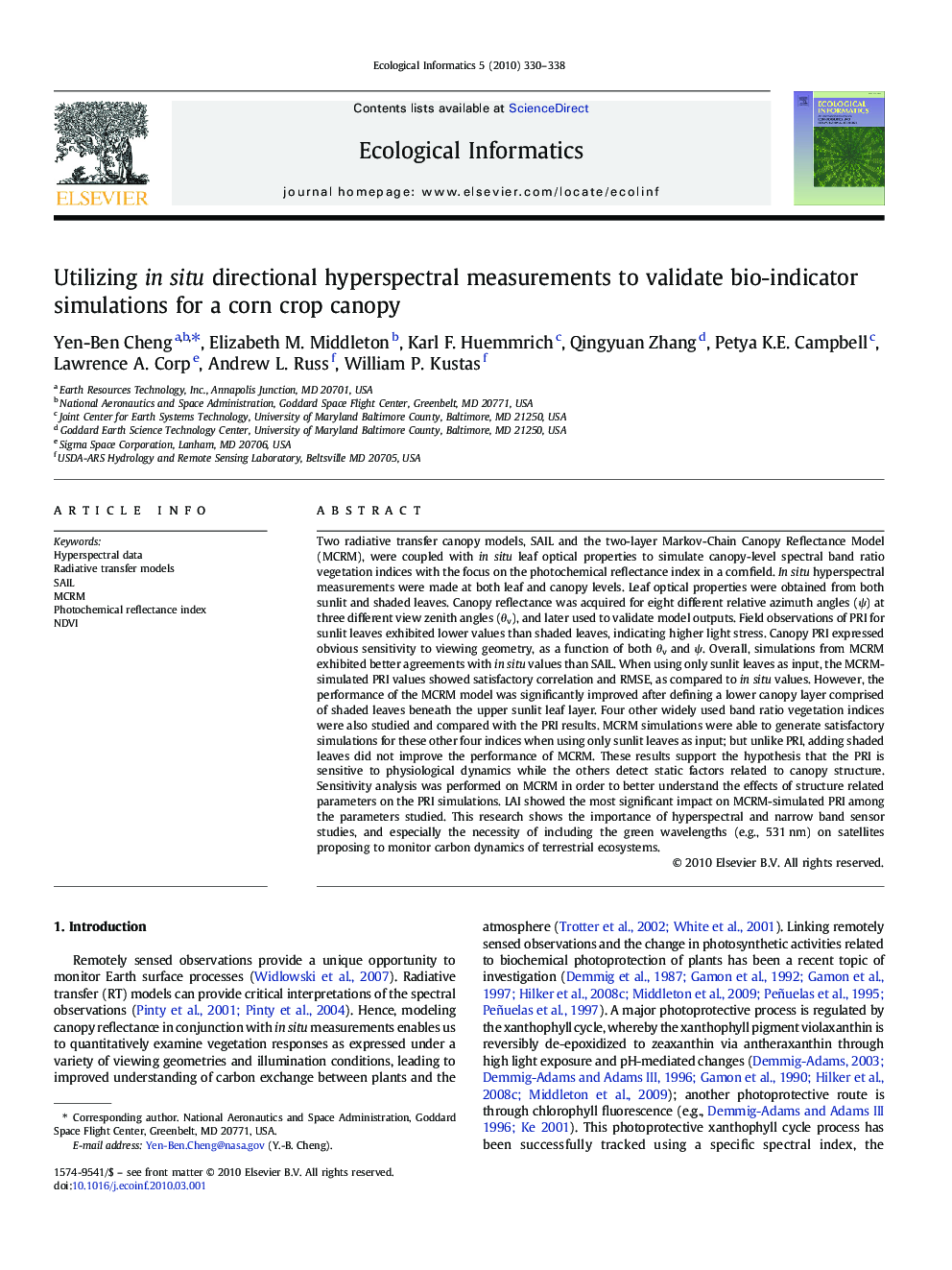| Article ID | Journal | Published Year | Pages | File Type |
|---|---|---|---|---|
| 4375272 | Ecological Informatics | 2010 | 9 Pages |
Abstract
Two radiative transfer canopy models, SAIL and the two-layer Markov-Chain Canopy Reflectance Model (MCRM), were coupled with in situ leaf optical properties to simulate canopy-level spectral band ratio vegetation indices with the focus on the photochemical reflectance index in a cornfield. In situ hyperspectral measurements were made at both leaf and canopy levels. Leaf optical properties were obtained from both sunlit and shaded leaves. Canopy reflectance was acquired for eight different relative azimuth angles (Ï) at three different view zenith angles (θv), and later used to validate model outputs. Field observations of PRI for sunlit leaves exhibited lower values than shaded leaves, indicating higher light stress. Canopy PRI expressed obvious sensitivity to viewing geometry, as a function of both θv and Ï. Overall, simulations from MCRM exhibited better agreements with in situ values than SAIL. When using only sunlit leaves as input, the MCRM-simulated PRI values showed satisfactory correlation and RMSE, as compared to in situ values. However, the performance of the MCRM model was significantly improved after defining a lower canopy layer comprised of shaded leaves beneath the upper sunlit leaf layer. Four other widely used band ratio vegetation indices were also studied and compared with the PRI results. MCRM simulations were able to generate satisfactory simulations for these other four indices when using only sunlit leaves as input; but unlike PRI, adding shaded leaves did not improve the performance of MCRM. These results support the hypothesis that the PRI is sensitive to physiological dynamics while the others detect static factors related to canopy structure. Sensitivity analysis was performed on MCRM in order to better understand the effects of structure related parameters on the PRI simulations. LAI showed the most significant impact on MCRM-simulated PRI among the parameters studied. This research shows the importance of hyperspectral and narrow band sensor studies, and especially the necessity of including the green wavelengths (e.g., 531 nm) on satellites proposing to monitor carbon dynamics of terrestrial ecosystems.
Related Topics
Life Sciences
Agricultural and Biological Sciences
Ecology, Evolution, Behavior and Systematics
Authors
Yen-Ben Cheng, Elizabeth M. Middleton, Karl F. Huemmrich, Qingyuan Zhang, Petya K.E. Campbell, Lawrence A. Corp, Andrew L. Russ, William P. Kustas,
